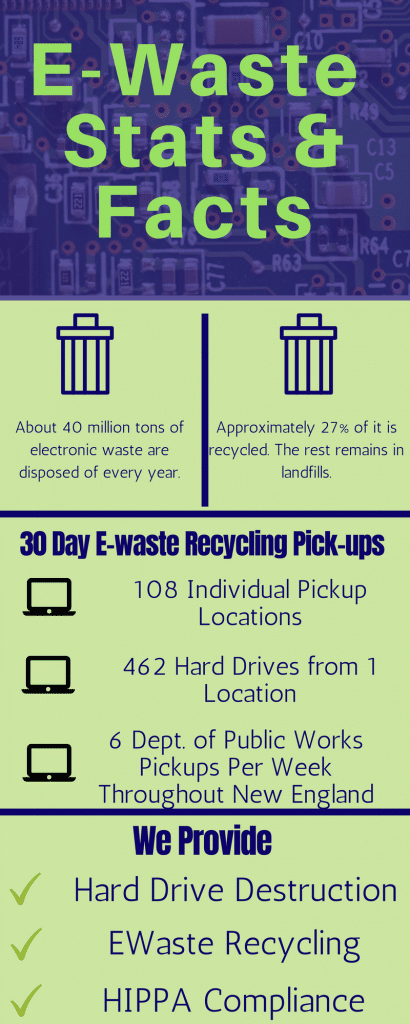Until January of this year, China received most of the world’s recyclables. In fact, in 2016 alone China accepted 7.3 million metric tons of recycled plastics alone. However, in July 2017 China announced to the World Trade Organization that they would no longer be accepting imports of 24 types of solid waste, including electronic waste, due to contamination concerns. In April 2018 they added 32 additional types of solid waste, including stainless steel and car and ship scraps, with half of the ban going into effect at the end of 2018 and the other half at the end of 2019.
This ban on materials imports has, of course, affected the status of electronic waste in the United States. Presently, many municipalities ship their electronic waste to various countries in Asia for processing, with China previously accepting a large portion of it. Now, as many municipalities are scrambling to figure out what to do with their waste that won’t be accepted by China, electronic waste recycling has become more important than ever.
With services like Data Recycling of New England’s electronic waste recycling options, there are ways to responsibly dispose of waste without it all ending up in landfills. For starters, we refurbish and resell as many of the electronics and electronic components as we can. When it comes to the collection of electronics that may contain personal or sensitive information, such as cell phones and computer hard drives, we wipe every single hard drive clean prior to either refurbishing the equipment for resale or physically destroying it for recycling.
Check out our infographic below for additional facts about electronic waste recycling.


Leave A Comment